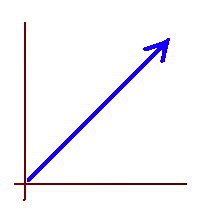Optical illusions show the need for proofs in Geometry
Yesterday I had two Geometry tutoring sessions. The first one in the day was only my second session with that student, while the second one was my first session with the other student [ a curious coincidence: (1,2) and (2,1); that is a symmetric pair in that relationship, with x = ordinal number of the session in the day; and y = ordinal number of the session with that particular student but I am digressing ].
One of the students showed progress in the sense that she was approaching the problems with more confidence than one week ago. Her mom told me she had also improved her grade in the last Geometry quiz she took. I attribute her improved performance to her increased confidence, which in turn I see as the result of our first tutoring session, because the confidence students have in their own understanding, and capabilities, usually increases when they benefit from the immediate feedback provided by the tutor subtly guiding them through their practice problems.
In the other session, the student asked some very good questions about proofs.
One question was to the effect of: “How do I know what properties, or theorems to use in a proof? Because at some point there are just too many of them, how do I know which ones to use in a proof?”
This is a very good question. It points to the core problem of looking for a path that connects the given statements with the desired conclusion. Many geometry students are confused by the uncertainty of the guessing involved in the process of finding a proof.
Elementary Arithmetic, an Algebra, are different from Geometry, and from Calculus, in that (among other things) most of their material can be presented as a set of prescribed, step-by-step procedures that specify what rules to apply, and in what order. They lend themselves to an algorithmic presentation more easily than Geometry or Calculus do.
Another good question this student had was about the very need for proofs, especially when the problem in question references a figure, drawing, or diagram. He said: “Why do I have to prove that those triangles are congruent, when you can just look at the picture and see they are congruent?”
Many geometry students ask this question. My short answer for it is: “What if the triangles in the picture are not really congruent because the picture is a tiny little bit off but we cannot notice the difference without a magnifying glass?”
We also talked about optical illusions, and how our sense of sight is charged with a heavy propensity to be “fooled,” “deceived,” or “misguided” by a whole variety of optical illusions, and so we can never trust pictures one hundred percent, not because of the picture but because the way our brain processes visual information.
Later in the afternoon, in between two tutoring sessions, I dropped by the bookstore looking for a CSET prep book, and I was gladly surprised when, by chance, I found a bargain priced book, precisely on the subject of optical illusions. It is this book right here, by Inga Menkhoff. It has plenty of quality pictures, with the corresponding explanations. I have always liked optical illusions.
Trying to fit exponential data
-
The first difficulty in trying to fit an exponential distribution to data
is that the data may not follow an exponential distribution. Nothing grows
expo...
4 hours ago





No comments:
Post a Comment